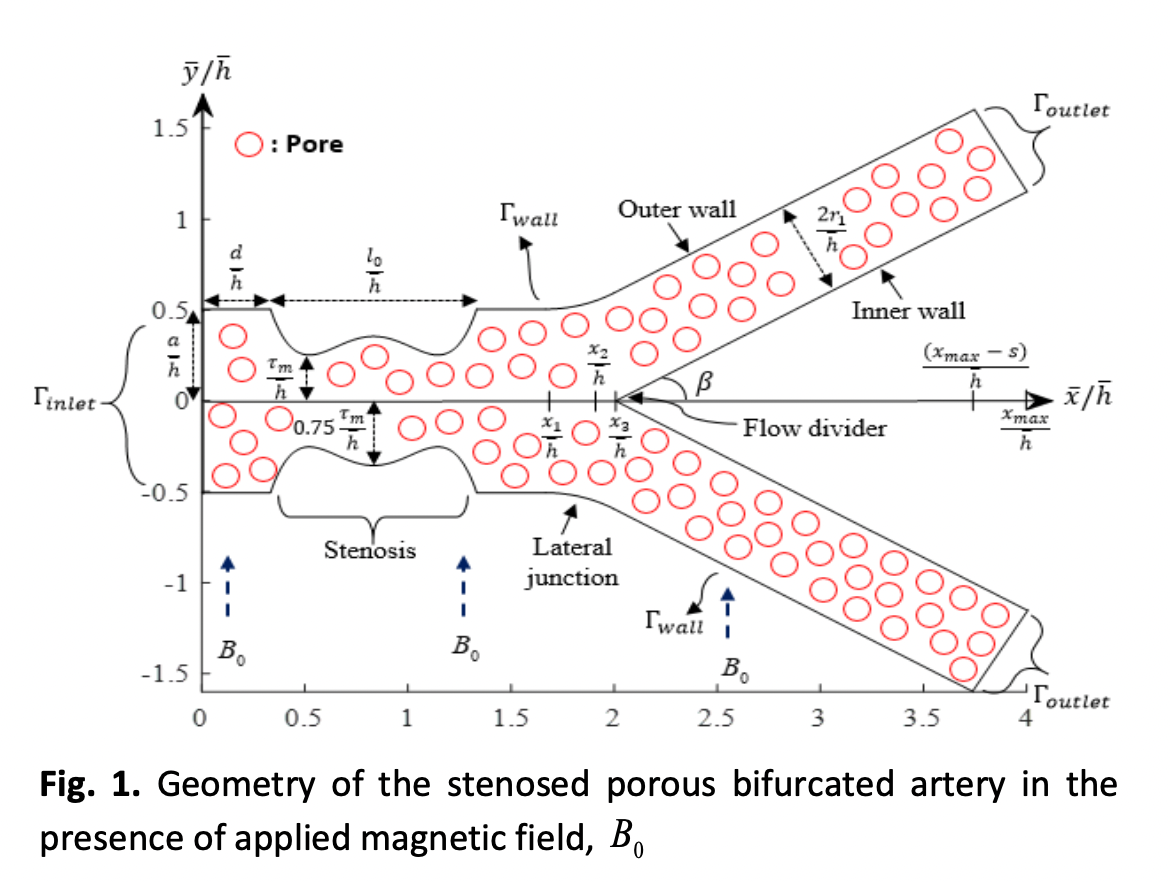Dynamic Response of Heat Transfer in Magnetohydrodynamic Blood Flow Through a Porous Bifurcated Artery with Overlapping Stenosis
DOI:
https://doi.org/10.37934/arfmts.101.1.215235Keywords:
Heat transfer, magnetohydrodynamic, porosity, overlapping stenosis, bifurcated artery, Galerkin least-squaresAbstract
The influence of heat transfers on magnetohydrodynamic blood flow treated as a Newtonian rheological model in permeable bifurcated arteries with a magnetic field applied in a transverse direction has been presented in this study. The blood flow is considered steady, incompressible, electrically conducting and porous as it consists of fatty accumulation on blood cells. A mathematical model governing such flow phenomena is developed by the Navier-Stokes and energy equations. The governing equations with appropriate boundary conditions are solved numerically by using a stabilized form of the finite element method, called the Galerkin least-squares method. The implementation of this method managed to overcome two sources of undesirable pathologies suffered by the Classical Galerkin method in solving the incompressible flow. This involves the requirement to satisfy the Babuška-Brezzi stability condition and the inherent instability arising from the approximations of highly advective flows. As a result, stable and converged solutions are generated for the velocity, temperature, pressure, wall shear stress and heat transfer coefficient in the constricted bifurcated artery by employing an equal order (quadratic triangular element) of interpolation function for velocity, pressure and temperature subspaces. The developed algorithm is validated with reported findings from previous literature where a close agreement has been achieved. Effects of the porosity parameter and Hartmann number in the presence of heat on blood flow characteristics at several locations along the branch artery are computed and presented graphically. The finding obtained from this work may be beneficial for cryosurgery and hyperthermia treatment in analysing the temperature distributions inside the vessel.
Downloads
































